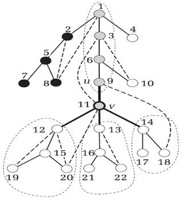Difference between revisions of "Articulation"
(Created page with 'File:lighterstill.jpgright|frame ==Origin== Latin ''articulatus'' jointed, past participle of ''articulare''...') |
m (Text replacement - "http://" to "https://") |
||
| (3 intermediate revisions by 2 users not shown) | |||
| Line 3: | Line 3: | ||
==Origin== | ==Origin== | ||
[[Latin]] ''articulatus'' jointed, past participle of ''articulare'', from ''articulus'' (see [[article]]) | [[Latin]] ''articulatus'' jointed, past participle of ''articulare'', from ''articulus'' (see [[article]]) | ||
| − | *[ | + | *[https://en.wikipedia.org/wiki/16th_century 1586] |
==Definitions== | ==Definitions== | ||
*1a : divided into syllables or [[words]] meaningfully arranged : intelligible | *1a : divided into syllables or [[words]] meaningfully arranged : intelligible | ||
| Line 9: | Line 9: | ||
:c : [[expressing]] oneself readily, [[clearly]], or effectively <an articulate teacher>; also : expressed readily, clearly, or effectively <an articulate [[argument]]> | :c : [[expressing]] oneself readily, [[clearly]], or effectively <an articulate teacher>; also : expressed readily, clearly, or effectively <an articulate [[argument]]> | ||
*2a : consisting of segments united by joints : jointed <articulate animals> | *2a : consisting of segments united by joints : jointed <articulate animals> | ||
| − | :b : distinctly marked off | + | :b : distinctly marked off |
| + | <center>For lessons on the related [[topic]] of '''''[[Expression]]''''', follow [https://nordan.daynal.org/wiki/index.php?title=Category:Expression '''''this link'''''].</center> | ||
| + | |||
==Description== | ==Description== | ||
| − | In [ | + | In [https://en.wikipedia.org/wiki/Graph_theory graph theory], a biconnected component (or 2-connected component) is a maximal [https://en.wikipedia.org/wiki/Biconnected_graph biconnected subgraph]. Any connected graph decomposes into a tree of biconnected components called the block tree of the graph. The blocks are attached to each other at shared vertices called cut vertices or '''articulation points'''. Specifically, a cut vertex is any vertex that when removed increases the number of [https://en.wikipedia.org/wiki/Connected_component_(graph_theory) connected components]. |
In [[music]], '''articulation''' refers to the musical direction [[performance]] [[technique]] which affects the [[transition]] or [[continuity]] on a single [[note]] or between multiple notes or [[sounds]]. | In [[music]], '''articulation''' refers to the musical direction [[performance]] [[technique]] which affects the [[transition]] or [[continuity]] on a single [[note]] or between multiple notes or [[sounds]]. | ||
| − | There are many [[types]] of articulation, with each having a [[different]] [[effect]] on how the [[note]] is played. Some articulation marks include the [ | + | There are many [[types]] of articulation, with each having a [[different]] [[effect]] on how the [[note]] is played. Some articulation marks include the [https://en.wikipedia.org/wiki/Slur_(music) slur], [https://en.wikipedia.org/wiki/Ligature_(music) phrase mark], [https://en.wikipedia.org/wiki/Staccato staccato], staccatissimo, accent, sforzando, rinforzando, and [https://en.wikipedia.org/wiki/Legato legato]. Each articulation is represented by a different symbol placed above or below the note (depending on its position on the staff). |
[[Category: Music]] | [[Category: Music]] | ||
[[Category: Languages and Literature]] | [[Category: Languages and Literature]] | ||
Latest revision as of 23:42, 12 December 2020
Origin
Latin articulatus jointed, past participle of articulare, from articulus (see article)
Definitions
- 1a : divided into syllables or words meaningfully arranged : intelligible
- b : able to speak
- c : expressing oneself readily, clearly, or effectively <an articulate teacher>; also : expressed readily, clearly, or effectively <an articulate argument>
- 2a : consisting of segments united by joints : jointed <articulate animals>
- b : distinctly marked off
Description
In graph theory, a biconnected component (or 2-connected component) is a maximal biconnected subgraph. Any connected graph decomposes into a tree of biconnected components called the block tree of the graph. The blocks are attached to each other at shared vertices called cut vertices or articulation points. Specifically, a cut vertex is any vertex that when removed increases the number of connected components.
In music, articulation refers to the musical direction performance technique which affects the transition or continuity on a single note or between multiple notes or sounds.
There are many types of articulation, with each having a different effect on how the note is played. Some articulation marks include the slur, phrase mark, staccato, staccatissimo, accent, sforzando, rinforzando, and legato. Each articulation is represented by a different symbol placed above or below the note (depending on its position on the staff).
